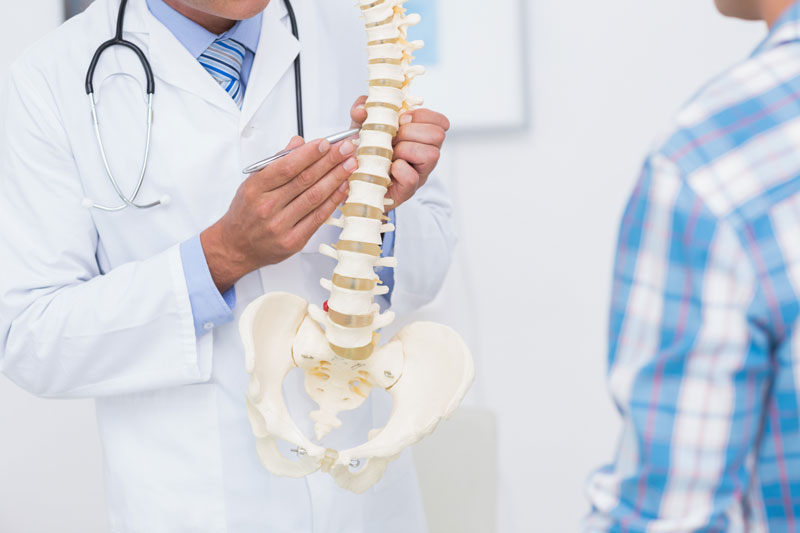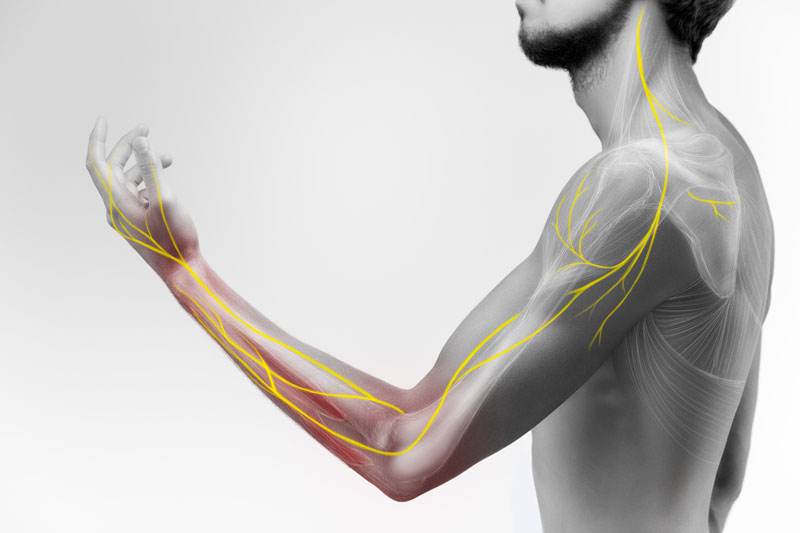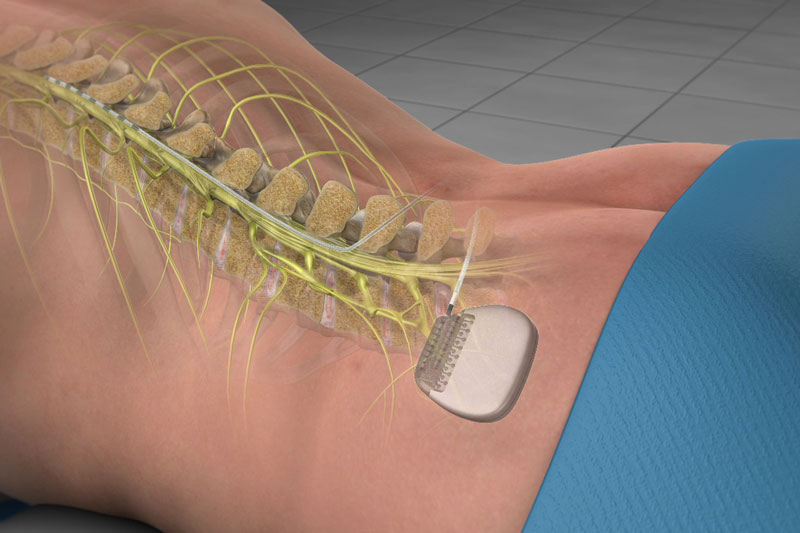We can also treat a variety of other pain conditions which can cause discomfort and loss of quality of life. Several specific examples are below:
- Cancer pain: stems from tumors pressing on nerves or as a side effect of treatment. There are a variety of treatments we can offer for this type of pain.
- Post-surgery pain: typical as the body heals after surgical procedures, but it’s managed to ensure patient comfort. Occasionally, patients will continue to suffer from pain after the normal course of healing. This is called persistent post-surgical pain. We most commonly see this after joint replacements.
- Migraines: severe headaches often accompanied by nausea and sensitivity to light and sound, affect millions. Specific medications and injections such as Botox can be helpful for this.
- Sports injuries: result from physical activity and can include strains, sprains, or more severe issues like fractures or torn ligaments. Treatment for these conditions varies, from medication and physical therapy to lifestyle adjustments, all aimed at alleviating pain and restoring well-being.
More About These Other Pain Conditions
Cancer Pain:
- Caused by tumors pressing on nerves or as a side effect of cancer treatment.
- Can be chronic or acute, requiring tailored pain management approaches.
- Managed through medications, nerve blocks, radiation therapy, and occasionally implantable pain pumps.
Migraines:
- Severe headaches often accompanied by nausea, vomiting, and sensitivity to light and sound.
- Chronic condition with episodic attacks.
- Treated with pain-relieving medications, preventive drugs, lifestyle changes, and avoidance of triggers.
- Many patients also get improvement with procedures on the cervical spine, occipital nerves, and Botox injections
Post-Surgical Pain:
- Common after surgical procedures as the body heals.
- Can vary in intensity and duration.
- Managed with pain medications, physical therapy, and other techniques to enhance recovery.
- Can occasionally be persistent.
Sports Injuries:
- Result from physical activity, including strains, sprains, fractures, and torn ligaments.
- Prevention through proper training and movement is crucial.

What Causes Some of These Other Pain Conditions?
Cancer Pain:
- Caused by tumors pressing on nerves or organs.
- Can result from cancer treatment, such as chemotherapy, radiation, or surgery.
Migraines:
- Exact cause is not fully understood but involves neurochemical changes in the brain.
- Triggers can include certain foods, stress, hormonal changes, and environmental factors.
Post-Surgical Pain:
- A natural part of the healing process following surgery.
- Result of tissue damage, inflammation, and nerve irritation during the procedure.
Sports Injuries:
- Typically the outcome of overuse, accidents, or sudden impacts during physical activity.
- Often involve muscle strains, ligament sprains, fractures, or dislocations.
What Are The Symptoms Of These Pain Conditions?
Cancer Pain:
- Symptoms vary depending on the location and stage of cancer.
- Common symptoms include persistent pain at the tumor site, often described as aching or throbbing, and may be accompanied by tenderness or swelling or radiating pain.
Migraines:
- Migraine symptoms typically include severe, pulsating headaches that can last for hours to days.
- Nausea, vomiting, and sensitivity to light and sound are common accompanying symptoms.
Post-Surgical Pain:
- Post-surgical pain varies depending on the type of surgery but often includes localized pain, tenderness, and swelling at the surgical site.
- Pain intensity and duration may differ from person to person.
Sports Injuries:
- Symptoms vary widely depending on the type and severity of the injury.
- Common symptoms include pain, swelling, limited range of motion, muscle weakness, and in some cases, visible deformities or bruising.
What Are The Treatment Options For These Pain Conditions?
Cancer Pain:
- Treatment aims to manage and alleviate pain, often involving a combination of medications, nerve blocks, and adjuvant drugs.
- Radiation therapy and chemotherapy may target tumors causing pain.
- Palliative care and supportive therapies are used to enhance comfort and improve overall well-being.
- Occasionally, implantable pain pumps can provide significant improvement.
Migraines:
- Migraine treatment includes acute medications for pain relief, such as triptans and analgesics.
- Preventive medications are prescribed for frequent or severe migraines.
- Lifestyle modifications, like identifying and avoiding triggers, can help manage and prevent migraines.
- Pain injections in the cervical spine and occipital nerves can sometimes give long lasting relief.
- Botox injections are also very helpful for chronic treatment of migraines.
Post-Surgical Pain:
- Pain management strategies may include pain medications, both over-the-counter and prescription.
- Physical therapy and rehabilitation programs help improve mobility and reduce pain.
- Ice and heat therapy, as well as rest, are often recommended.
- For persistent pain, pain injections aimed at blocking nerves to the affected area can be particularly helpful.
Sorts Injuries:
- Treatment depends on the type and severity of the injury.
- Physical therapy is used to rehabilitate and strengthen injured areas.
- In some cases, surgery may be required to repair severe injuries, followed by rehabilitation.
Frequently Asked Questions about other pain conditions
Here is a list of frequently asked questions (FAQs) about other pain conditions, along with brief answers to each question:
Cancer Pain:
1. What causes cancer pain, and can it be controlled?
- Answer: Cancer pain can result from tumors pressing on nerves or organs. Yes, it can often be managed effectively through various treatments as described above.
2. Are there side effects or risks associated with cancer pain medications?
- Answer: Yes, some pain medications may have side effects, and long-term opioid use can carry risks. Discuss potential side effects and risks with us prior to starting treatment. Often to side effects can be managed until the pain has subsided.
3. Is palliative care the same as hospice care?
- Answer: No, palliative care focuses on relieving symptoms and improving the quality of life for individuals with serious illnesses, while hospice care is for end-of-life care.
Migraines:
4. What causes migraines, and are there specific triggers to avoid?
- Answer: Migraines are caused by neurochemical changes in the brain. Common triggers include certain foods, stress, hormonal changes, and environmental factors.
5. Can migraines be completely cured?
- Answer: Migraines are typically managed rather than cured. However, many people can significantly reduce the frequency and intensity of their migraines with appropriate treatments as discussed above.
Post-Surgical Pain:
6. How long does post-surgical pain typically last?
- Answer: The duration of post-surgical pain varies depending on the type of surgery and individual factors. It can last for a few days to several weeks, but it should gradually improve.
7. What can I do to manage post-surgical pain at home?
- Answer: Follow your surgeon’s instructions for pain medications, rest, and any prescribed physical therapy exercises. Applying ice or heat as directed may also help.
Sports Injuries:
8. How can I prevent sports injuries?
- Answer: To prevent sports injuries, warm up before activities, use proper techniques and equipment, maintain good physical conditioning, and follow safe training practices.
9. When should I seek medical attention for a sports injury?
- Answer: If you suspect a serious injury, experience severe pain, cannot bear weight on a limb, or notice significant swelling or deformity, it’s essential to seek immediate medical attention.
10. How long does recovery from a sports injury typically take?
- Answer: Recovery time varies depending on the type and severity of the injury. It can range from a few weeks for minor injuries to several months for more severe ones.
It’s important to consult with us for personalized information and guidance related to these pain conditions, as individual experiences and treatment options may vary.













